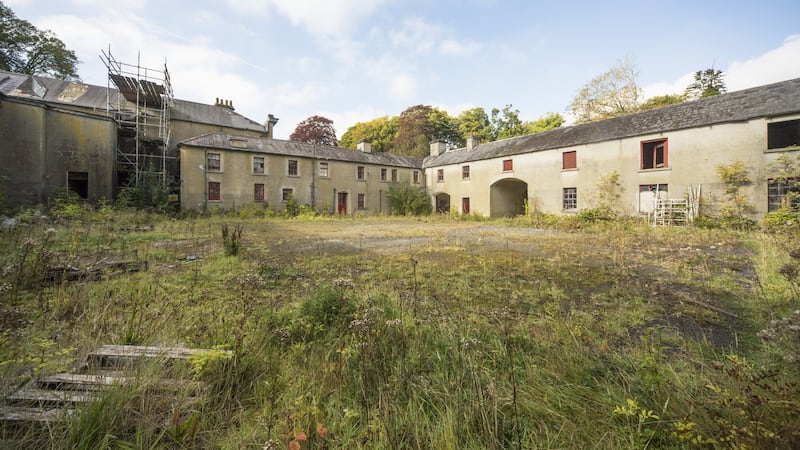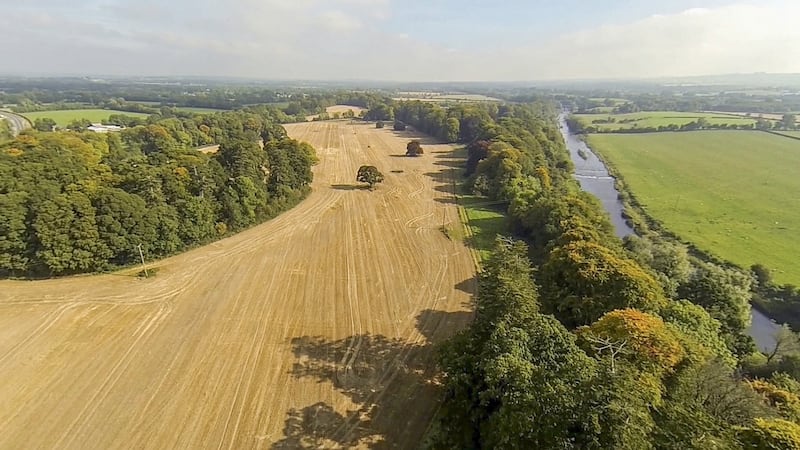Once described as one of Co Meath's finest estates and "a trophy buy" for a Celtic-tiger era millionaire, the 180-acre walled demesne Bective House overlooking the Boyne, is back on the market.
Lying midway between Trim and Navan, the house’s previous occupiers have included a polo-playing, cavalry officer as well as the families of literary figures who over more than 150 years enjoyed its lawned terraces reaching down to a 4km stretch of the river.
In the 1970s Bective was bought as a family home by the businessman Michael Wymes. Wymes engaged in some of the longest running litigation in the history of the State in relation to Bula Mines. He sold Bective in 2006 for a reported €13 million.


Bective House and its walled demesne is now for sale again, this time for €3.5 million. But here is the rub: a further €1.5 million is the estimate Philip Guckian of Sherry FitzGerald Country sensibly adds on as the probable amount a new owner would have to spend on major restoration.
The restoration works shouldn’t be underestimated. Some of the principal reception rooms are missing ceilings. In the front rooms including the main hall, the joists for the upper floor are being held up by scaffolding. The downstairs windows are boarded over. Upstairs a sash window is falling out. The flat roof above the ballroom annex is leaking, the courtyard is overgrown. Two gate lodges at the south and north avenues to the property are almost derelict, the north one appears to have been hit by a falling tree. There is a lot to be done.
Stately proportions
But for the final price of about €5 million the buyer could have a turn-key, heritage estate of great charm and stately proportions. The ballroom alone is in a glorious setting, situated at the end of the east wing overlooking the gardens as they drop down to the Boyne. On the way to the ballroom is the drawingroom, followed by the sittingroom and the morningroom, the lounge and the study, among other, smaller reception rooms which face on to the lawn overlooking the river. It is the kind of arrangement which inspires thoughts of a full house on a summer’s evening, Pimms and croquet.
Across the main hall from the drawingroom is the diningroom, one of the few reception rooms where most of the plaster work seems to remain. Fabric still covers some of the walls and a wardrobe, the remains of furniture and an over-sink mirror speak of a previous occupant in retreat from all that needs to be done.
On the first floor an oval ceiling light is positioned to bring natural daylight into the upstairs landing and staircase, or would be if it wasn’t covered by what might be a protective, outer layer of roofing felt. But the bedrooms are numerous, big and brightly lit by large sash windows. Through a bedroom window is the sight of a near perfect pastoral scene, the best of Meath’s fine arable land, to one side a wood, in the distance a tractor tilling a field bathed in spring sunshine. A romantic couldn’t but love Bective.
Bell tower
Outside, there is a walled garden, a tennis court and an enclosed courtyard to the rear of the main house, as well as a stable block across the north avenue offering just a glimpse of a bell tower.
There is a gardener's cottage – completely refurbished and extended, more than 200sq m (2,500sq ft) of mostly new build, its interiors looking like something out of Vogue. Clearly there is potential for a new owner to live here while restoration is under way.
Additional accommodation is available in the courtyard where converted outbuildings could be modernised. The entire package offers a variety of accommodation, suitable perhaps for a boutique hotel or a wedding venue.
The lands are currently let out offering a potentially useful revenue stream. Bective Lodge, as it was then known, was first recorded on the Riddance Survey in 1837, the lands were originally part of nearby Bective Abbey.
For lovers of heritage, between the house and the abbey lie the ruins of Clady church and graveyard with a small twin-arched footbridge. It is claimed that Sir William Wilde said the bridge was the most ancient of its kind in Ireland.
Mary Lavin
The cavalry officer John Watson was one of the most famous equestrian sportsmen of his day. He is credited with devising the rules which form the basis of the modern-day game of polo. He lived at Bective on his return from India in 1891 and died there in 1908. After that the estate became the childhood home of novelist James Stern. A wealthy American businessman Charles Sumner Bird later bought Bective and appointed Tom Lavin, father of the writer Mary Lavin as his estate manager. Mary Lavin's first collection of short stories Tales from Bective Bridge (1942) was inspired here. The house is currently owned by a local businessman.










